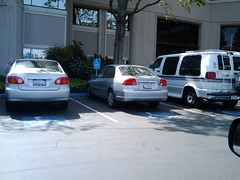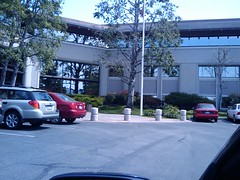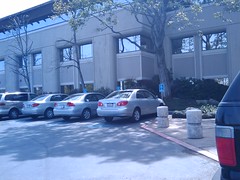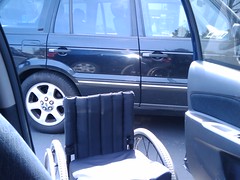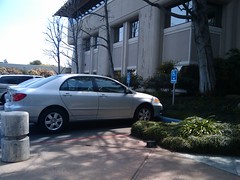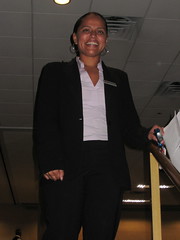Story of a formal complaint process about riding the bus while disabled
A bad incident on the bus in June led me to file a formal complaint. I described the incident as it unfolded on Twitter, and then gathered the tweets about it here on Storify: Screaming wheelchair-hating SF MUNI bus driver. I routinely go through moments where bus drivers resist the idea of letting me on the bus, or just pass me up, or act a little rude or horrible. In those cases, I have sometimes filed a complaint, and sometimes not, and let it go at that. Life isn’t perfect, neither are people, and I don’t expect my encounters with everyone to be ideal. But this was over the top. Here is an example of how to file a complaint about San Francisco bus service. My goal in explaining this at length, and in filing a bus complaint in the first place, is to improve bus and public transit service for disabled people in the SF Bay Area.
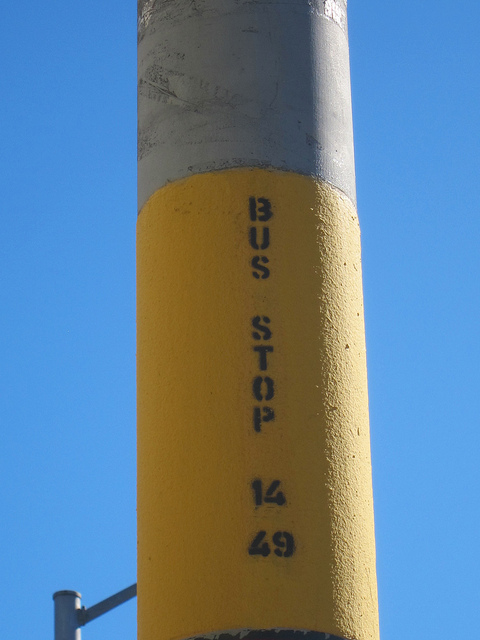
First of all, I twittered the incident as it happened. This gave me a written, public record of my memory of the incident, while it was fresh in my mind. It gives me the date and time stamps of when I got on and off the bus, as well. Afterwards I collected the tweets on Storify because I wanted to be able to refer to them later. For a person without a smart phone this could be done with pen and paper.
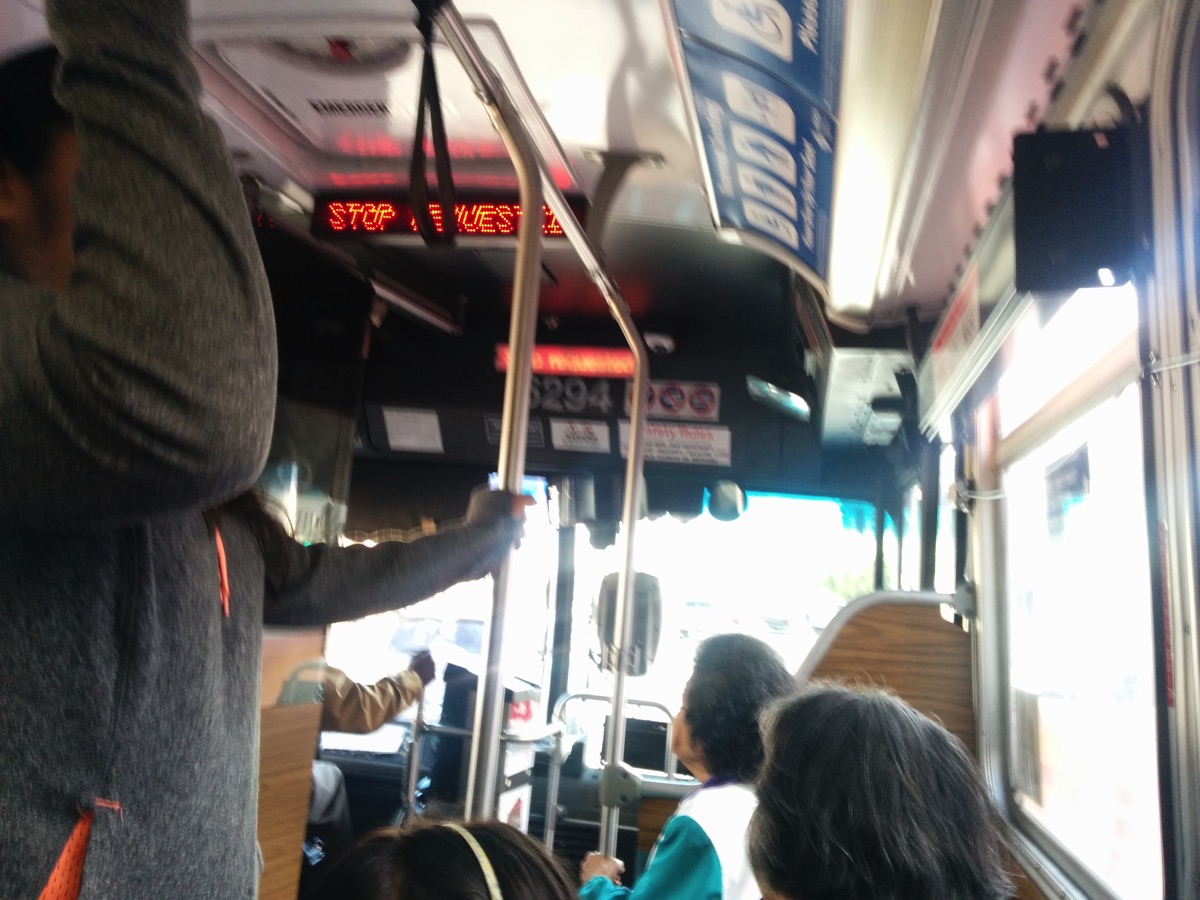
Second, I noted the time, bus number, and driver’s badge number. Noted on paper, as I carry a small notebook and a pen in my vest pocket from long habit.
Third, I quickly filed a complaint through the SFMTA feedback form on the web. You can also do this by calling 311. You have to choose a complaint category. The categories are a bit confusing. I believe I filed this as “Discourteous Driver”. I asked for an in-person hearing, and checked the box that said it is an ADA complaint. I got an email response within a few days from SFMTA, saying that they got my complaint and assigning it a reference number. (There may have also been a snail mail letter.) I then got a email asking me to call a local number to schedule the in-person hearing.
Fourth, I emailed the local Independent Living Center, the ILRCSF and asked to talk with their lawyer, thinking maybe they could explain what happens at, and after, these hearings. The center staff were very helpful and nice, and met with me to chat about the incident. It is possible to ask their lawyer to go with you to this kind of hearing.
Fifth, I called to schedule the hearing with SFMTA. As the hearing date approached, I had to reschedule it because of illness. You are only allowed to reschedule once. I have to mention the person I talked to on the phone was super nice and helpful. I got letters from her almost immediately, confirming the hearing time and date, with clear instructions how to get to the hearing location. That email’s contents were in a Word document so likely the staff has a template for responding.
Sixth, I looked at the Americans with Disabilities Act, wondering if I should file a complaint through ada.gov. My conclusion was: No. That is more for a group complaint about systemic and sustained discrimination, that a local government doesn’t respond to. What I’m describing here is one specific incident. If there were such a complaint it would be under Title II of the ADA. Anyway, I am a busy person and this is already taken up far too much of my time and energy.
Seventh, I filed a Freedom of Information Act (FOIA) request for the video and audio from the bus’s built in surveillance system, since the bus videos are public record. On the web, I found clear instructions on how to file a FOIA request to the SFMTA. I used this template example of a FOIA request in California for my letter. I was able to file this request by email, and regular mail was an option too. I got a response very quickly, I think the same day, by email. Just yesterday, I got two DVDs with video and audio clips. They played on a Windows machine, with the viewing software built into the DVD, showing 8 or 9 different camera angles in different parts of the bus, with one audio track.
I looked over the videos and made a full transcript of the interactions between me and the bus driver.
Here’s the video. It’s a little over 4 minutes long, and includes 3 segments edited together. When I switched to footage from a different bus camera, I backed up the video a little bit, so some segments repeat for a few seconds from the different angle, for continuity. (edited to add, I realized last night that the 3rd segment was missing, so I added it as a separate video below)
First the driver refuses to let me on. He then pulls the bus up to me, and we argue further. His arguments included, that he isn’t allowed to let people on except exactly at the stop; that he has inspectors watching him; then, that there isn’t room. He then lets the ramp down. I get on, he yells some more, then he gets up again to tell me I can’t sit in the bus seat but must sit in my scooter. I refuse. The bus then moves on and the video jumps to when I get off the bus, the last person to get off near the end of the line downtown. I ask the driver for his badge number, he gives it, then he yells at me some more.
The complaint hearing is this Tuesday.
Interesting information from the hearing confirmation:
Hearings last approximately 30 minutes and include a professional neutral hearing officer, the transit operator, and customer. After the hearing officer reads the complaint, the customer and the operator (or his/her union representative) are offered opportunities to comment and ask follow-up questions. Afterward, the hearing officer evaluates the evidence, and a written decision is forwarded to the customer within seven days.
Please note that your attendance at the hearing is required in order for the hearing officer to make a decision regarding your complaint. Please bring photo identification (such as a Driver’s License, State ID, or Passport) so we may confirm your identity.
I wonder how many policies or public transit operator the driver broke in this incident. From watching the video, here are some possibilities:
1. The driver does not pull up to let me board. I was clearly indicating I wanted to get on the bus. In the best practices I’m familiar with, bus drivers pull up just beyond a bus shelter, to let a wheelchair or walker user board, asking other people to board at the back of the bus. This is efficient and fast.
You can see in this photo still from the video, from 8:28:11am, that there was room for a person in a wheelchair to board and ride the bus. There are empty seats. No one is standing in the front section of the bus. It is very clear.
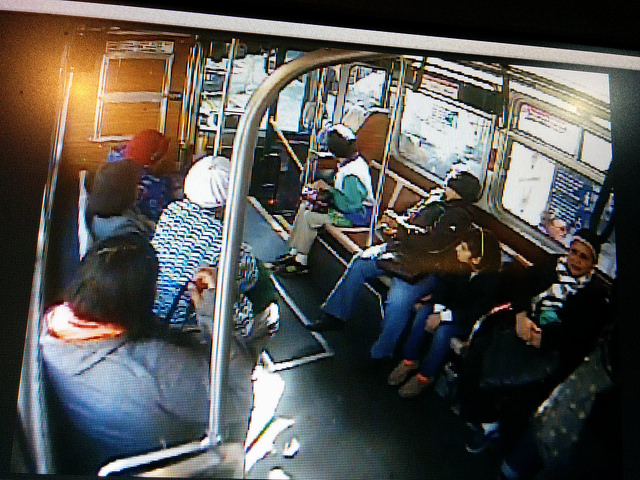
2. The driver refuses to pull up to let me on.
3. I ask him again to let me on the bus. He refuses and tells me to catch the next bus, several times.
4. The bus driver then moves the bus up about 10 feet, stops, and gets out of the bus, to stand over me and yell at me. Surely this is not supposed to happen at all.
5. He tells me that there inspectors watching. It’s unclear whether that’s his excuse not to let me on, or whether he’s using them as a kind of threat. He tells me he’s going to get them to deal with me.
6. The driver then tells me the bus is too crowded. It isn’t. Also, as time went by during our argument, more people boarded.
7. The driver then tells me that I should not be demanding to get on the bus.
He continues yelling as I board.
8. After I was seated, the driver got up to stand over me and yell some more. He claims that I have to sit on my scooter and can’t sit in a bus seat. This is not true.
9. The driver then complains to another passenger that my wheelchair is blocking other people. It was not.
Here is a photo of my scooter on a bus in exactly the configuration I had it on the #14 on June 2.
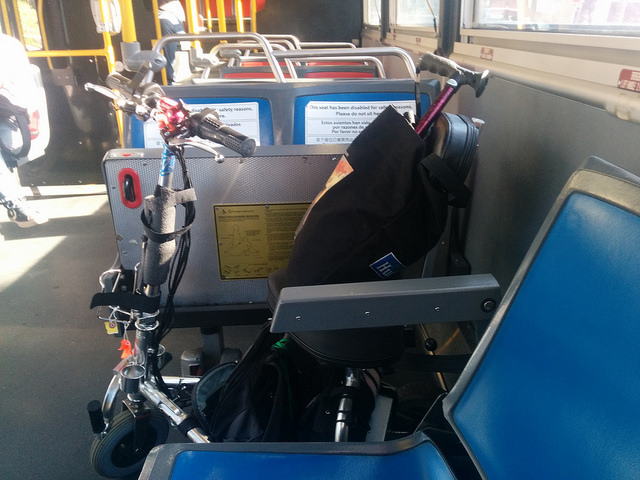
10. As I exit the bus, the driver insults me by saying that disabled people complain all the time and “that’s how y’all live”. and calls my wheelchair a stroller.
11. The driver tells me “be there tomorrow” meaning, I think, be at the stop on his line and see what he will do. I assumed that meant he will not let me on the bus next time or will be hostile in some other way.
So much to unpack.
It is a little sad that no one else on the bus said or did anything to help me. I can understand that they may not have been paying attention until things went badly. By that time, who knew what was going on, and who was at fault. And getting involved might make things worse or mean more delay. Everyone wanted to just move on! However, I would have spoken up as a passenger to say that the driver should have let me on the bus and that it wasn’t right to yell in my face the way he did. I encourage anyone reading to think it over and do what is right.
Sometimes, it is other passengers who start to yell at me out of their perception that I am a parasite on society, that I shouldn’t be allowed on the bus, or out in public, and so on. This happens once in a while, and I will explain to any such person at length about the law, the 504 sit ins, how people blocked the buses in Denver, and any other piece of defense of myself and all of us that I can think of. It is certainly upsetting and enraging. I try to keep my cool.

During this incident, I did not outright lose my temper, swear, or anything like that. I stated my rights and told the driver there was room on the bus and room to put the lift down. Repeatedly. Frankly I was mad as a hornet that this driver was probably going to pass me up for no reason. And likely as not, so would the next one. My power is not in my body. It is in my mind and voice. You can see that from how I never shut up and kept telling the driver to let me on.
The time I found the most upsetting was when I was on the lift, and the driver got up to stand over me, yelling that I should stop talking. I stopped talking. I finally felt intimidated. I wanted to get to work. I wanted the confrontation to end. Fine. I was on the bus. I did not feel good about shutting up when told to. However, it seemed practical. So it was shocking that the driver then came again to yell at me and stand over me. It seemed best not to argue, but to passively resist. I decided I would not get off that bus till I was at my stop and if he called the police to throw me off, he would be very much in the wrong. Luckily, that did not happen. The driver finally realized he should leave me be, and move on and do his job.
My memory and the tweets mostly match up with the video. I don’t hear the part I remember where I said, it is the law you have to let me on. I think it’s in an inaudible part, but I know I said it. That’s what the driver responded to when he says “That’s a rule, too”. I did not remember that he got out of the bus to stand over me on the sidewalk and yell. Wild. I still don’t. But there it is in the video. Also, I described the driver as “screaming”. After seeing the video I would not say that. I’d call it “yelling” instead. We both had to yell to be heard. As I exited I thought that he had said something like, “Be here tomorrow and see what happens.” But in the video it’s clear he said “Be here tomorrow… ” twice, and then closed the bus door. So I was extrapolating the end of the sentence, but that’s not actually what he said. Otherwise my memory is pretty accurate.
So, I did eventually get on the bus, got off the bus at my stop, and got to work on time for my meeting with my boss. Great. But….
I believe that the driver was discriminating against me because of my disability.
I don’t look forward to confronting this man in a hearing at his workplace. I also don’t like the idea I will be riding a bus with him any time in the future, but that seems likely to happen. Hopefully if it does, we will not need to interact beyond the minimum of politeness.
Bus drivers work hard and have to put up with a lot of bad behavior from the public. Clearly the 14 (and 49!) are no picnic to drive. I can see that I was annoying to the driver with my persistence and my insisting that he let me on the bus. However, he should have let me on in the first place. I would have paid my fare and thanked him, asked for my stop, and we both would have had a fine day. For the middle of the ride, I observed the driver be friendly and polite, chatting with all the other riders as if trying to prove to himself that he was a nice person. Or, perhaps to show to the other riders that he was “the good one” and that my behavior was bad, in other words, to try and show me up. Maybe both at once. The point is, I could see he knows how to do his job well.
My expectations from this complaint are that SFMTA will take the complaint seriously. I hope they will appropriately train the driver to interact with wheelchair users and how to let them onto the bus in a normal and efficient way. I believe they should also look at their training process since it is not uncommon for me that drivers refuse to let me on the bus, or simply pass me up without stopping. Passing me and other wheelchair users up is particularly a problem on the MUNI train level boarding stops above ground. Drivers are also often hostile and rude.
The drivers who are nice, or simply businesslike, I very much appreciate.
I like to get around town, by myself or with my friends or my kids, without being yelled at and humiliated in public.
Feel free to tell stories about accessibility and bus drivers in the comments, if you like.
